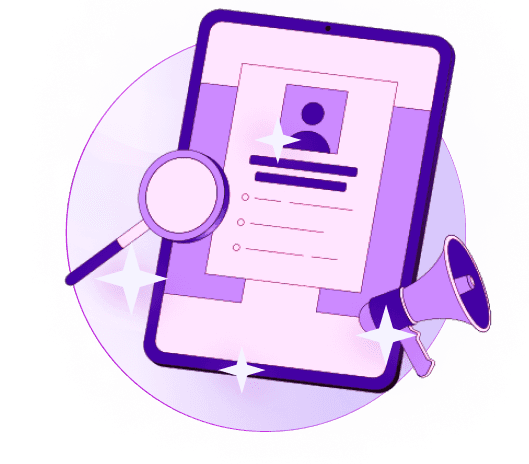Blogs
Articles

How to Measure AI Sales Agent ROI: A Simple Framework That Actually Works
Companies that track AI Sales Agent ROI effectively see 2.3x higher revenue growth rates than those using traditional measurement approaches.
The facts speak for themselves. Most companies see AI's potential in sales, but many find it hard to measure what it means for their bottom line. The rewards make it worth the effort though. To name just one example, organizations see returns of 3x to 6x their investment during their first year with ai sales agents.
This piece offers a clear framework to measure and maximize your roi with ai in sales operations. These strategies will help you track your ai salesperson investment's true value, whether you're new to the process or working to improve your current measurement system.
Why measuring AI Sales Agent ROI matters?
Measuring how AI sales agents affect business goes beyond tracking numbers—it shows a fundamental change in sales operations. Companies that use complete AI Agent ROI measurement frameworks perform better than their competitors. They achieve 2.3x higher revenue growth rates compared to those using traditional measurement approaches.
The shift from traditional to AI-driven sales
Artificial Intelligence quickly becomes the core of modern sales strategies and changes how sales professionals interact with prospects and close deals. This change isn't small—it's revolutionary. Sales teams that use AI have achieved 30% or better improvement in win rates.
AI's true value in sales comes from reimagining processes rather than automating existing ones. Sellers currently spend only about 25% of their time selling to customers. AI could double that percentage by handling tasks that don't add value.
How ROI with AI differs from other tech investments?
AI Agent ROI shows a fundamental change in technology investment assessment. Traditional software implementations focus on cutting costs or optimizing processes. AI agents create value in multiple ways at once. They do more than automate tasks—they improve decision-making, predict outcomes, and create customized experiences.
The measurement of AI ROI needs a sophisticated framework to capture both direct and indirect benefits. A CRM system might boost sales team productivity by 15%. An AI agent can do more: it can increase lead qualification accuracy by 40%, reduce customer churn by 25%, and speed up deal closure by 30%.
Common misconceptions about AI sales rep performance
Many myths about AI sales assistants continue to spread. These myths stop organizations from adopting solutions that could significantly improve their sales performance. One common myth suggests AI will replace human salespeople. The reality shows AI helps increase human decision-making capabilities.
Other common misconceptions include:
AI lacks personalization abilities, yet modern AI delivers highly customized content
AI suits only large enterprises, but today's AI solutions are available and affordable for businesses of all sizes
AI agents create security risks, though most providers implement strong data protection measures
These realities help organizations make better decisions about implementing and measuring AI sales agent ROI.
Core Metrics to Track AI Sales Agent ROI
You need to track specific performance indicators to assess your AI Sales Agent ROI. These five core metrics give you a detailed view of how well your AI investment works, based on research and real-life implementation data.
Time saved per task or workflow
Sales teams with AI assistants save up to two hours every day on administrative tasks. This frees up 25% of the workday for actual selling activities. A team of ten salespeople gains over 50 extra selling hours weekly. This adds up to more than 2,600 hours annually that go straight into revenue-generating activities. The results are impressive - some teams have cut their proposal generation time from three weeks to just two hours.
Revenue generated through AI sales prospecting
AI-driven sales prospecting boosts the bottom line through faster and bigger deals. Teams that use advanced AI sales agents close deals 15% faster and increase deal size by 30%. Companies using AI in their sales processes see a 6.2% increase in overall sales. The numbers tell the story - 83% of AI-enabled sales teams grew revenue, while only 66% of teams without AI technology did the same.
Cost reduction from automation and fewer hires
We found that 44% of companies save money after implementing AI solutions. Top performers cut expenses by at least 10%. These savings come from automating tasks like data entry, CRM updates, and routine follow-ups that used to need human input. Companies with AI have cut their customer service costs by up to 35%. Sales automation tools can reduce sales costs by 10-15%.
Customer satisfaction and retention improvements
AI helps boost customer satisfaction scores by 7%. This happens because AI creates tailored interactions. About 69% of retailers earn higher profits from AI-driven personalized recommendations. AI-powered chatbots work well too - one system handled 70% of customer queries without any human help.
Lead conversion rate improvements
The best results show up in conversion rates. Companies see their lead conversion rates jump up to 30% after adding AI to their sales processes. AI sales teams achieve 30% better win rates throughout the selling funnel. Real examples back this up. One SaaS company booked 250% more meetings using an AI qualification agent. Another business saw their product conversion rates soar by 400%.
How to Build a Simple ROI Framework That Works?
You need a systematic way to build an effective AI Sales Agent ROI framework that shows the complete value it creates. Your original goals should align with specific sales outcomes.
Set pre-AI benchmarks for key sales metrics
Your team should record baseline performance metrics before adding an ai sales assistant. Keep track of how long tasks take, sales conversion rates, and what customers think about your service. These numbers will help you calculate improvements later. A good example would be your team's weekly support ticket count of 1,000. This number becomes your baseline to measure changes after you start using AI.
Use a clear formula: (Gains - Costs) / Investment
The ROI math stays simple: ROI = (Net Return from Investment - Cost of Investment) / Cost of Investment × 100. With ai sales agents, the formula expands to: ROI = [(Revenue Gains + Cost Savings + Productivity Improvements + Risk Mitigation Value) – (Implementation Costs + Operational Costs + Training Costs + Maintenance Costs)] / Total Investment × 100.
Track both tangible and intangible benefits
Direct benefits like cost savings and extra revenue are easy to measure. The harder-to-measure benefits matter too. These include faster decisions, better information sharing, and quick market responses. While these benefits are tough to put numbers on, they add real value to your business over time.
Incorporate AI sales assistant performance data
Make sure to track these specific ai sales rep metrics:
How many people actually use the system
How often each person uses it daily or weekly
Time saved on tasks compared to before
Use cohort analysis to track long-term gains
Cohort analysis helps you learn more by comparing different user groups over time. This method shows you how different groups behave days, weeks, and months after starting with the system. Looking at groups based on when they subscribed gives you great insights about how your ai for sales calls works in the long run.
Optimizing and Scaling ROI Over Time
Getting good results from AI Sales Agent ROI takes more than just setting it up. Companies that learn to use these technologies well and take a smart approach to making them better see much bigger returns.
Make AI sales agent workflows better with analytics
The best ai sales assistants keep getting better through analytical insights. Your team should set up systems to watch both how well the technology works and what business results it brings. Regular checks help spot when models start to drift or show bias, which lets teams fix things quickly.
Spread the benefits to other departments
When your ai sales rep works well in one place, you can carefully spread it to other areas to boost returns across your company. Businesses that put money into AI automation software for reaching out to customers see their sales ROI go up by 10-20%. This growth works well because AI can easily handle more data and activity as sales teams get bigger and deals become more complex. The AI gives teams useful insights they can act on throughout the sales process.
Use predictive modeling to plan future returns
Smart companies use predictive modeling to see what future AI Sales Agent ROI might look like in different situations. Those who know how to use these predictions get 20-30% better results when they invest because they plan better and handle risks smarter. These models let you play out "what-if" situations to see how your returns might change if you spend more here or move resources there.
Create a culture that values measuring and improving
To get good roi with ai over time, your company needs to make measuring results a priority when making decisions. Companies that really focus on ROI keep getting 25-35% better returns from their AI Agents because they make smarter choices about using their resources. This change in company culture needs training programs, rewards for good performance, and ways to make decisions that focus on measuring ROI.
Conclusion
The right way to measure how AI sales agents work can make the difference between okay results and exceptional performance. This piece outlines a practical framework that works to calculate your AI investment's true value.
Companies that use complete measurement approaches achieve 2.3x higher revenue growth rates compared to those using traditional methods. Our framework enables you to track both concrete metrics like time saved and revenue generated. It also covers less tangible benefits such as better decision-making and market responsiveness.
Note that successful AI sales agent implementation starts with clear pre-AI measures. You must apply the ROI formula consistently while monitoring performance through cohort analysis. This systematic approach shows exactly where and how your AI tools add value.
The measurement experience doesn't stop after implementation. Evidence-based improvements, new use cases in various departments, predictive modeling, and creating a measurement culture help maximize returns over time.
The move to AI-powered sales is more than a technology upgrade - it reshapes how sales teams operate and succeed. Companies that invest in both AI tools and measuring their effect will without doubt stay ahead of competitors using outdated measurement approaches.
Knowing how to calculate AI sales agent ROI accurately will ended up determining whether you're making smart investments or just following trends. Start using these measurement strategies today and watch your AI sales initiatives deliver better returns tomorrow.
Key Takeaways
Measuring AI sales agent ROI effectively is crucial for maximizing your investment and achieving sustainable growth in today's competitive landscape.
• Establish clear pre-AI benchmarks for key metrics like conversion rates, task completion times, and customer satisfaction to accurately measure improvement impact.
• Use the comprehensive ROI formula: (Revenue Gains + Cost Savings + Productivity Improvements - Total Implementation Costs) / Total Investment × 100 for accurate calculations.
• Track five core metrics: time saved per task, revenue from AI prospecting, cost reduction from automation, customer satisfaction improvements, and lead conversion rates.
• Focus on both tangible and intangible benefits including direct cost savings, revenue increases, improved decision-making speed, and enhanced market responsiveness capabilities.
• Implement cohort analysis and predictive modeling to track long-term gains and forecast future ROI scenarios for better strategic planning.
• Build a measurement-driven culture with continuous refinement, cross-department expansion, and data-driven decision-making to sustain 25-35% higher ROI over time.
Companies that master AI sales agent ROI measurement achieve 2.3x higher revenue growth rates and see returns of $8-$12 for every dollar invested. The key is moving beyond basic implementation to strategic optimization through consistent measurement and iteration.

Create Your Free Persana Account Today
Join 5000+ GTM leaders who are using Persana for their outbound needs.
How Persana increases your sales results
One of the most effective ways to ensure sales cycle consistency is by using AI-driven automation. A solution like Persana, and its AI SDR - Nia, helps you streamline significant parts of your sales process, including prospecting, outreach personalization, and follow-up.



